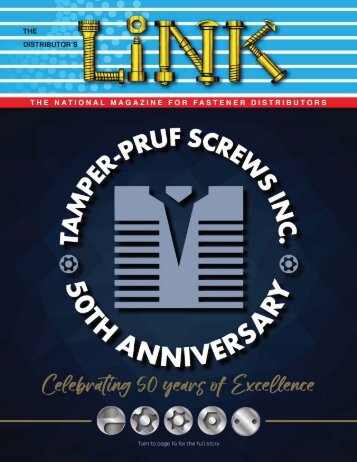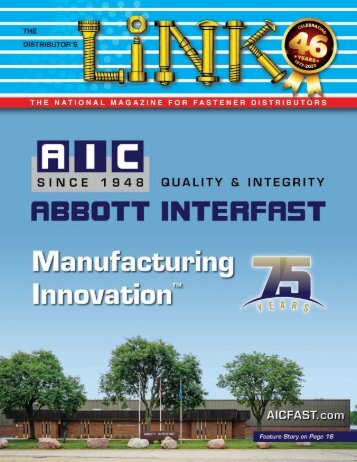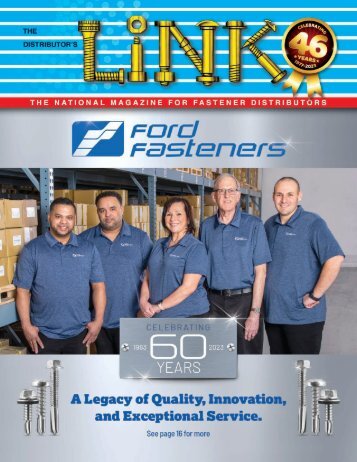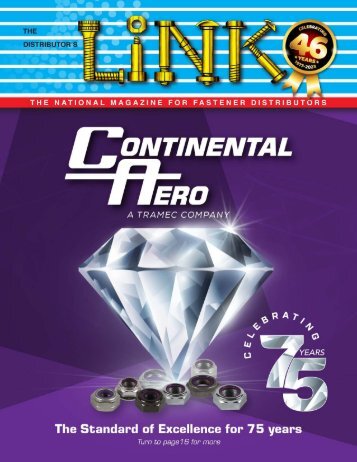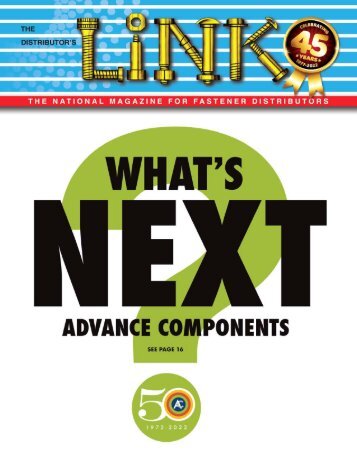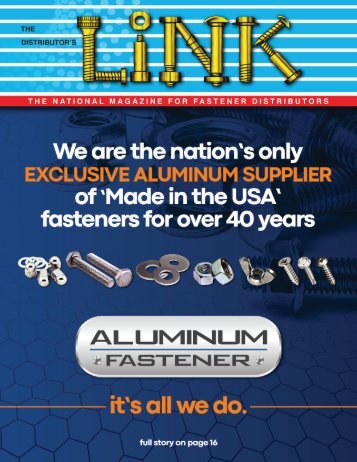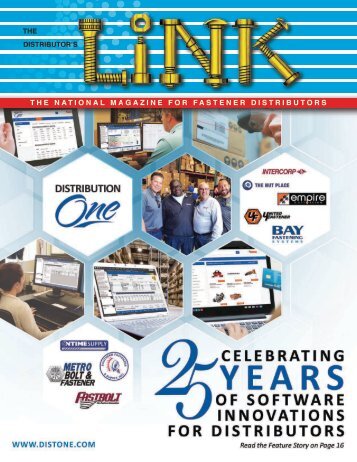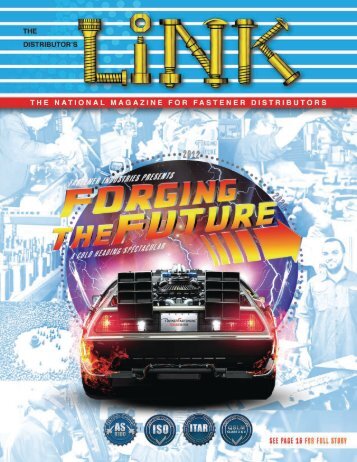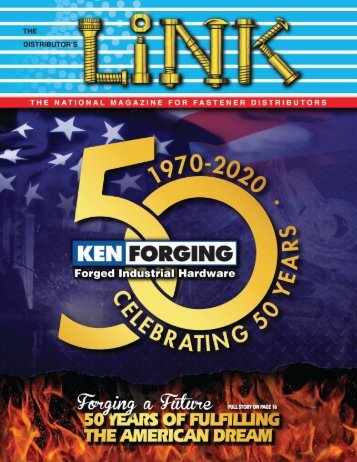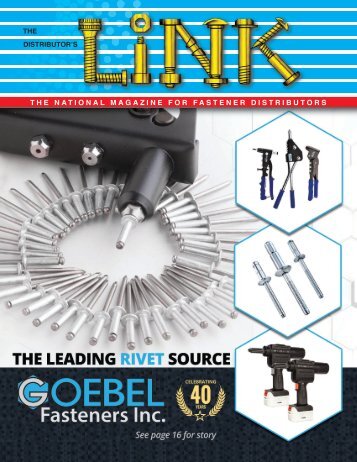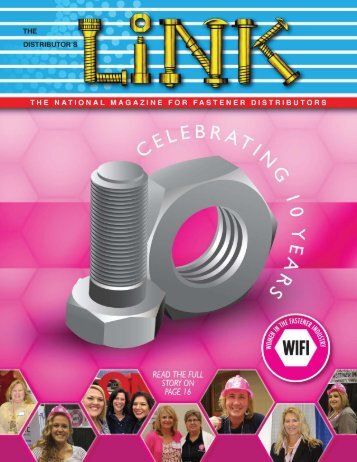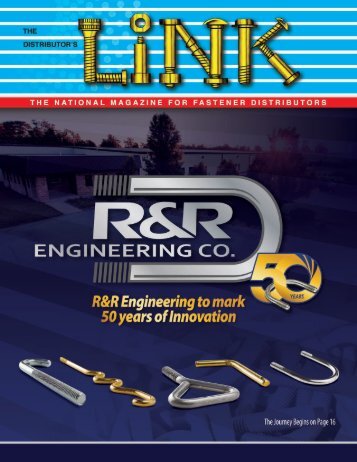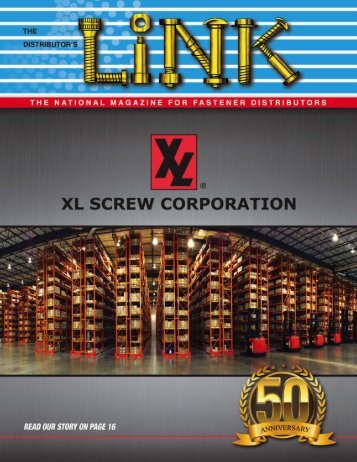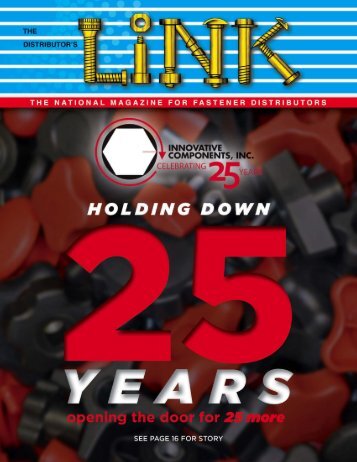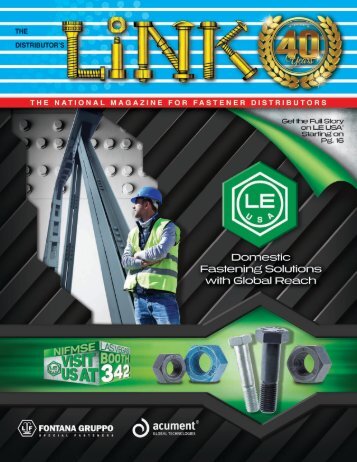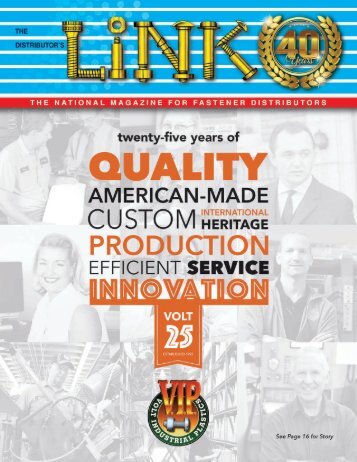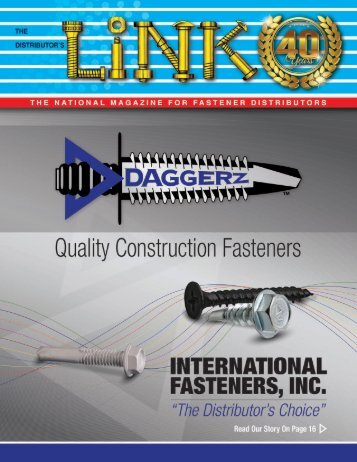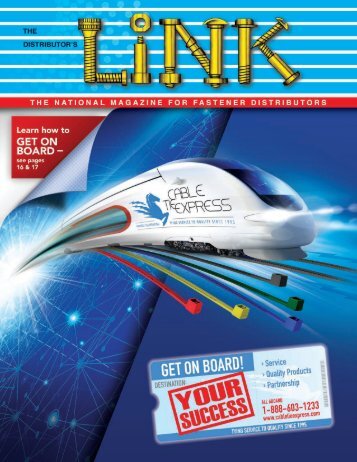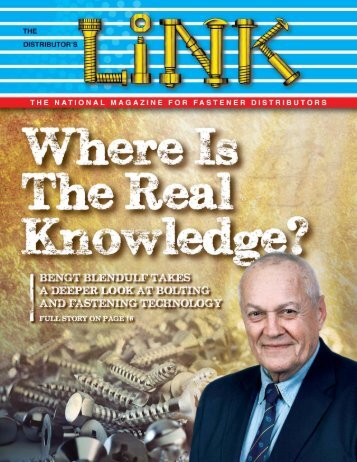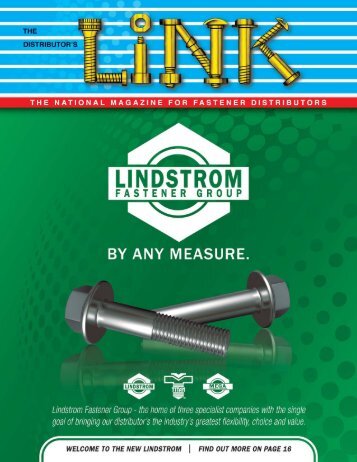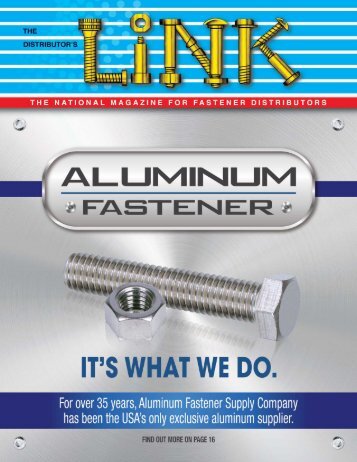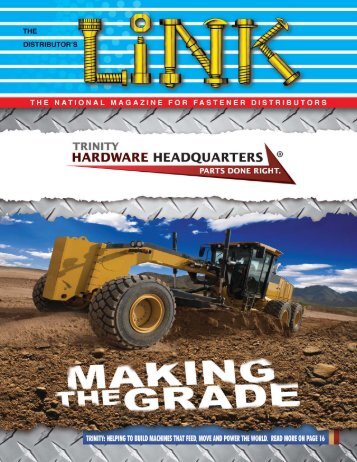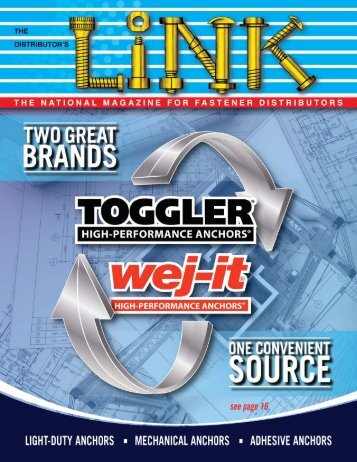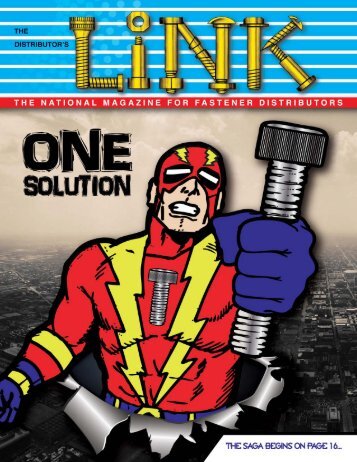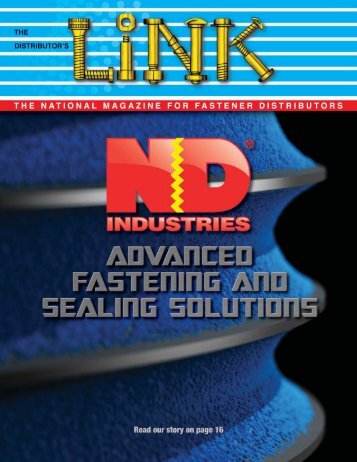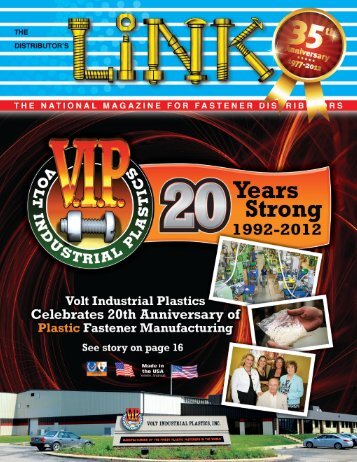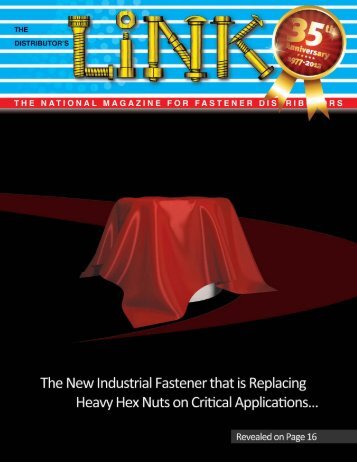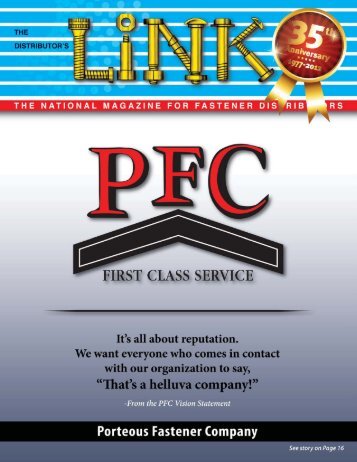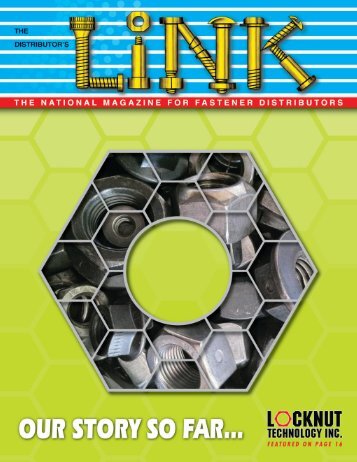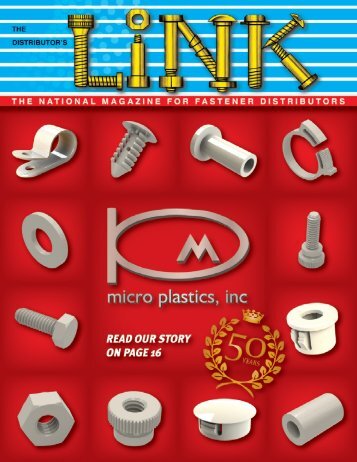FALL 2020
- Text
- Software
- Association
- Pins
- Industrial
- Screws
- Stainless
- Products
- Distributors
- Fasteners
- Fastener
12 THE DISTRIBUTOR’S
12 THE DISTRIBUTOR’S LINK Bruno Marbacher Bruno Marbacher earned his mechanical engineering degree in Switzerland, he also holds a business degree. He started out as a tool and die maker (poly-mechanic) and over the years he has held various management positions in quality and engineering. During his time in America he has developed and given numerous seminars on topics related to the proper use of mechanical fasteners and machine elements, and assists engineers in solving fastening/assembly issues. His has groomed and directed many young engineers in fastening/assembly technology. He now offers his 40 years of experience through writing and lecturing. ISO SYSTEM FOR LIMITS & FITS - INTERCHANGEABILITY OF METRIC MECHANICAL FASTENERS WORLDWIDE Making Things Fit Together Metric fasteners and machine elements can be fitted together worldwide. To assure this they must be manufactured to international recognized standards. However, there is another reason, why interchangeability should be achieved. The critical features of parts have their tolerances derived from the international system for limits and fits. Thus, mechanical machine elements made in a certain country of the world can be assembled with a part made in a different country of the world. In this article we provide some insight why this is the case. some electronic/computer parts). With the introduction of mass production, it became evident that efficient mass assembly is only possible, if parts can be fitted together without a great deal of modifying and adjusting. This led to the creation of the ISO system for limits and fits Negotiations to introduce a system for international use started in the 1920’s. However, it took years to develop a practical system. The current system is based on the ISA system for limits and fits that was first introduced in the 1940’s. Since the German standards association (DIN) was entrusted with the creation of the system, it obviously was based on the metric system. FIGURE 1 The ISO system for limits and fits was original designed for precision pins and/or shafts going into a precision hole. But now it is also widely used for metric fasteners etc. For metric threads, a similar system has been designed to assure interchangeability, it will be addressed in a future article. For thousends of years, parts were fitted together individually, which meant they were not interchangeable. They possibly could be fitted together if they were made by the same manufacturer (today, still the case with TECHNICAL ARTICLE FIGURE 2 The System Is Used Worldwide Today, the tolerance system is used by all industrial nations including the U.S. Although the system was created in metric, there is also an inch version available. ANSI B 4 .1 is based on this system. The system is intended to provide a systematic approach to fit two parts together, namely a pin/shaft fitted into a part with a hole, regardless of whether they are made in-house or at the other side of the world. CONTINUED ON PAGE 106
- Page 6 and 7: in the Fall 2020 issue of 6 DISTRIB
- Page 8: 6 THE DISTRIBUTOR’S LINK The Brad
- Page 12: 10 THE DISTRIBUTOR’S LINK Guy Ave
- Page 18 and 19: Choosing the right software to stre
- Page 20: THE RIGHT CHOICE FOR SUCCESS INxSQL
- Page 24: BOOST YOUR SALES WITH A NEW STRATEG
- Page 28: 26 THE DISTRIBUTOR’S LINK JASPER
- Page 32: 30 THE DISTRIBUTOR’S LINK GOEBEL
- Page 35 and 36: THE DISTRIBUTOR’S LINK 33 Advance
- Page 38 and 39: 36 THE DISTRIBUTOR’S LINK 3Q INC.
- Page 40 and 41: 38 THE DISTRIBUTOR’S LINK Larry B
- Page 42: 40 THE DISTRIBUTOR’S LINK EARNEST
- Page 47 and 48: THE DISTRIBUTOR’S LINK 45
- Page 50: 48 THE DISTRIBUTOR’S LINK Robert
- Page 53 and 54: ZIP FASTENER PRODUCTS INC. THE DIST
- Page 56 and 57: 54 THE DISTRIBUTOR’S LINK Nelson
- Page 58: 56 THE DISTRIBUTOR’S LINK Roman B
- Page 61 and 62: THE DISTRIBUTOR’S LINK 59
- Page 64 and 65:
62 THE DISTRIBUTOR’S LINK Jo Morr
- Page 66:
64 THE DISTRIBUTOR’S LINK PRODUCT
- Page 69 and 70:
THE DISTRIBUTOR’S LINK 67
- Page 71 and 72:
THE DISTRIBUTOR’S LINK 69 Solon M
- Page 73 and 74:
THE DISTRIBUTOR’S LINK 71 MID-WES
- Page 76:
74 THE DISTRIBUTOR’S LINK STEEL K
- Page 79 and 80:
THE DISTRIBUTOR’S LINK 77 Birming
- Page 81 and 82:
THE DISTRIBUTOR’S LINK 79
- Page 83 and 84:
THE DISTRIBUTOR’S LINK 81 NORTH C
- Page 86 and 87:
84 THE DISTRIBUTOR’S LINK NEW ENG
- Page 88 and 89:
CONTINUED ON PAGE 126
- Page 90:
88 THE DISTRIBUTOR’S LINK PACIFIC
- Page 94:
92 THE DISTRIBUTOR’S LINK SOUTHWE
- Page 98:
96 THE DISTRIBUTOR’S LINK DELTA E
- Page 102:
100 THE DISTRIBUTOR’S LINK LAUREN
- Page 108 and 109:
106 THE DISTRIBUTOR’S LINK BRUNO
- Page 110:
108 THE DISTRIBUTOR’S LINK EUROLI
- Page 114:
112 THE DISTRIBUTOR’S LINK STAFDA
- Page 117 and 118:
THE DISTRIBUTOR’S LINK 115
- Page 119 and 120:
THE DISTRIBUTOR’S LINK 117 OBITUA
- Page 122:
120 THE DISTRIBUTOR’S LINK EARNES
- Page 125 and 126:
THE DISTRIBUTOR’S LINK 123
- Page 127:
THE DISTRIBUTOR’S LINK 125
- Page 131 and 132:
Jergens, Inc. announced that it has
- Page 134:
WORK-FROM-HOME MADE EASY With INxSQ
- Page 137 and 138:
fastenerlinks BRINGING YOU THE FAST
- Page 139 and 140:
fastenerlinks BRINGING YOU THE FAST
- Page 142:
140 THE DISTRIBUTOR’S LINK NELSON
- Page 145 and 146:
THE DISTRIBUTOR’S LINK 143
- Page 148:
146 THE DISTRIBUTOR’S LINK PRODUC
- Page 151 and 152:
THE DISTRIBUTOR’S LINK 149 LAUREN
- Page 153 and 154:
THE DISTRIBUTOR’S LINK 151 BRUNO
- Page 156:
154 THE DISTRIBUTOR’S LINK JASPER
- Page 160:
158 THE DISTRIBUTOR’S LINK JOE DY
- Page 163 and 164:
THE DISTRIBUTOR’S LINK 161 ROBERT
- Page 165 and 166:
THE DISTRIBUTOR’S LINK 163 PWFA C
- Page 168 and 169:
advertisers index # 3Q, INC. 37 Was
- Page 170:
advertisers index M MAR-BRO MANUFAC
Inappropriate
Loading...
Mail this publication
Loading...
Embed
Loading...
|
SHARE A PAGE FROM THIS MAGAZINE OPTION 1: Click on the share tab above, or OPTION 2: Click on the icon (far right of toolbar) and then click on the icon (far right of toolbar) and then click on the  icon (top right of the page). icon (top right of the page).
|
View Archives
Copyright © Distributor's Link, Inc. All Rights Reserved | Privacy Policy







